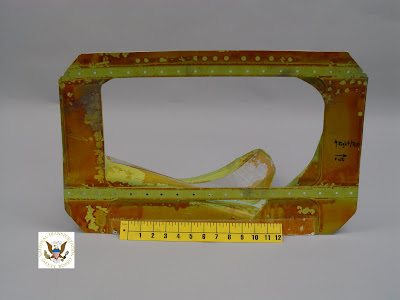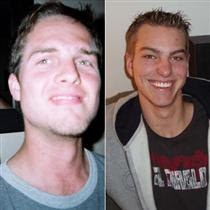 In March of 2008, a chartered Cessna 500 (registration N113SH) crashed two minutes after taking off from Oklahoma City's Wiley Post Airport (PWA), killing the two pilots and three passengers on board. The U.S. National Transportation Board (NTSB) has issued a report on the accident, citing "airplane wing-structure damage sustained during impact with one or more large birds (American white pelicans), which resulted in a loss of control of the airplane" as the probable cause. In addition, the Board notes that the aircraft was operating improperly as a charter, and that the pilots were not legally authorized to fly the aircraft for commercial purposes.
In March of 2008, a chartered Cessna 500 (registration N113SH) crashed two minutes after taking off from Oklahoma City's Wiley Post Airport (PWA), killing the two pilots and three passengers on board. The U.S. National Transportation Board (NTSB) has issued a report on the accident, citing "airplane wing-structure damage sustained during impact with one or more large birds (American white pelicans), which resulted in a loss of control of the airplane" as the probable cause. In addition, the Board notes that the aircraft was operating improperly as a charter, and that the pilots were not legally authorized to fly the aircraft for commercial purposes.Regarding the accident, on March 4, 2008, at approximately 3:15 p.m. (CST), the aircraft departed PWA, bound for Mankato Regional Airport, Mankato, Minnesota. On board were two pilots and three passengers. Shortly after takeoff, the aircraft was impacted by several large birds, namely pelicans. The NTSB determined that the bird strike caused wing-structure damage resulting in a loss of control. The aircraft went into a steep descent and crashed. The aircraft was completely destroyed by the impact and post-crash fire, and all on board were killed.
The NTSB's investigation uncovered what the Board's Acting Chairman Mark V. Rosenker called "improper and noncompliant charter operations that should have been identified and discontinued by the FAA."
The aircraft was registered to Southwest Orthopedic & Sports Medicine Clinic PC of Oklahoma City, Oklahoma. An IFR flight plan was filed under Part 91 rules, however it emerged that the aircraft was operating as a charter. As such, it should have been operating under Part 135 rules.
The flight originated from the ramp of Interstate Helicopters, a Part 135 on-demand helicopter operator at PWA. The NTSB accident report notes the following points about the operation and the pilots:
- The accident pilot was certificated, trained, and qualified to fly the accident airplane in noncommercial operations as a single pilot.
- The second pilot was not trained, qualified, or current to fly the accident airplane; however, because the pilot was authorized to fly the accident airplane as a single pilot, the second pilot could occupy a cockpit seat and assist the pilot as directed.
- At the time of the accident, Interstate Helicopters was operating the accident airplane in commercial service contrary to its Federal Aviation Administration-issued 14 Code of Federal Regulations Part 135 operating certificate, which, at the time, did not authorize operation of the accident airplane or any other fixed-wing aircraft.
- Neither the pilot nor the second pilot were trained or qualified to fly the accident airplane in any 14 Code of Federal Regulations Part 135 commercial charter operation, and the accident airplane was not maintained in accordance with Part 135 commercial maintenance requirements.
- Interstate Helicopters repeatedly labeled invoices as “aircraft lease” and “sales demo” flights, effectively disguising the noncompliant charter flights and circumventing the terms of its operating certificate.
The NTSB also recommends that FAA flight plans include "a block for the pilot to identify the operator and a block to specify the operating rules under which the flight is being conducted." The Board points out that a pilot "would be less likely to intentionally or inadvertently agree to fly an unauthorized commercial charter operation if the pilot, as the final authority for the operation of the aircraft, were required to identify on the flight plan the name of the operator and the regulation under which the flight is operating."
Also included in the NTSB recommendations are a number of items relating to bird-strike certification requirements for transport category aircraft; more stringent verification of airport wildlife hazard assessments; and reporting of wildlife strikes.
As a final note of particular interest to pilots, the aircraft was equipped with a cockpit voice recorder (CVR), which was retrieved from the wreckage. It was found to have been inoperative at the time of the accident, and in fact it probably had been inop for some time prior to the accident. It provided no data for the investigation.
The NTSB urges the FAA to require aircraft equipped with a CVR "to be functionally tested before the first flight of each day and to perform a periodic maintenance check of the CVR."
Here is the link to the Abstract of the NTSB's report about this accident: NTSB ID: AAR-09-05.
Here is the link to the NTSB Accident Docket, where you can find all of the documents in support of this accident investigation, as well as photos of the aircraft wreckage at the crash site.













